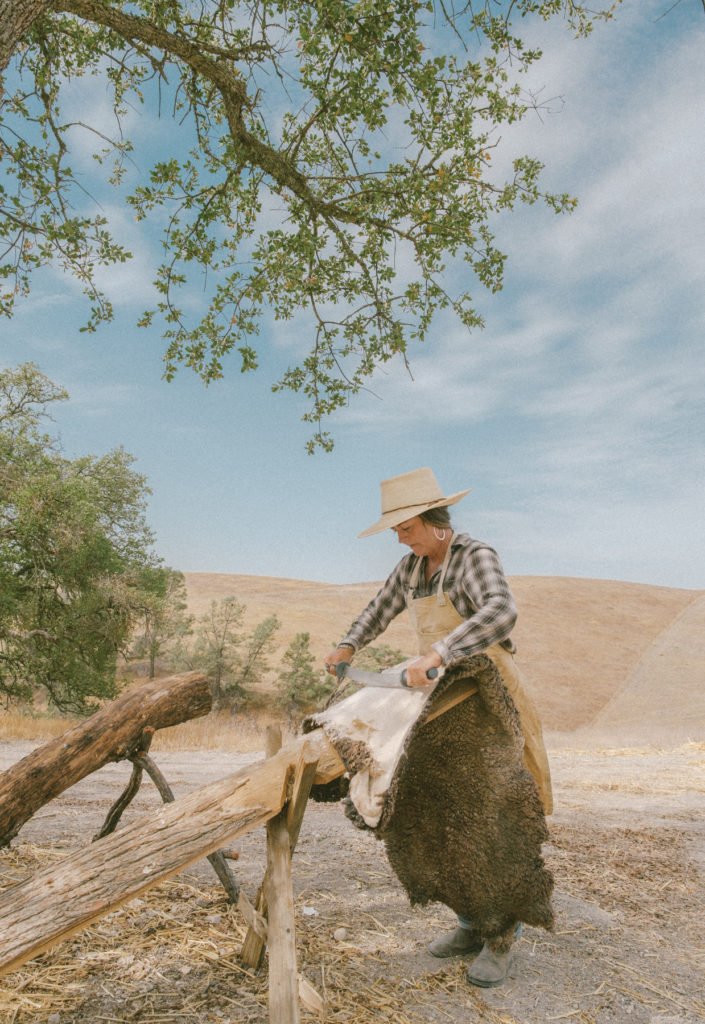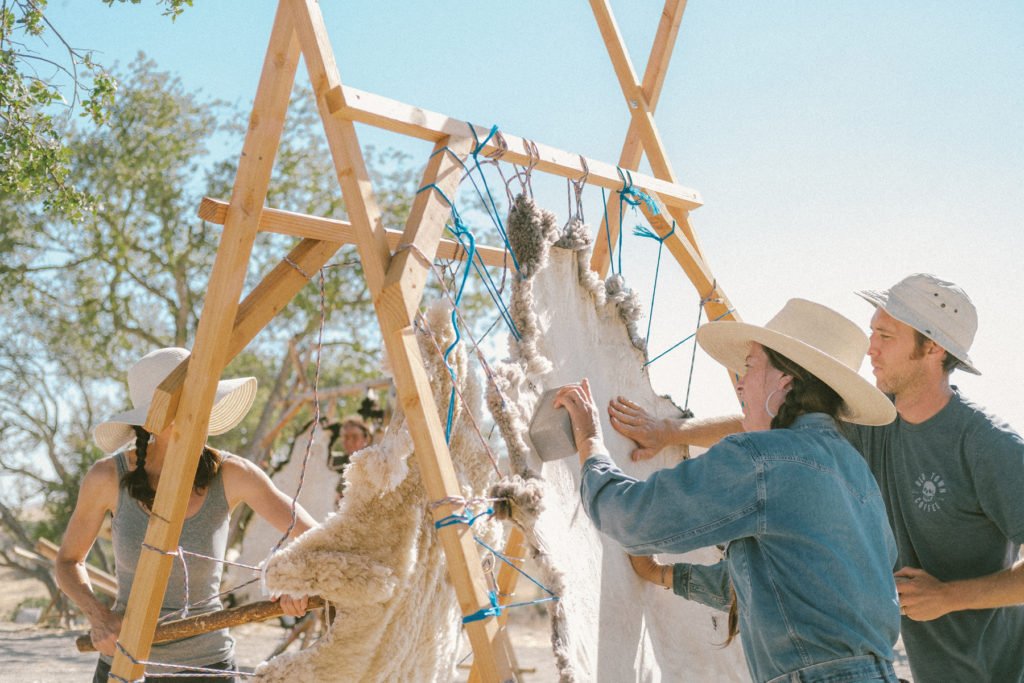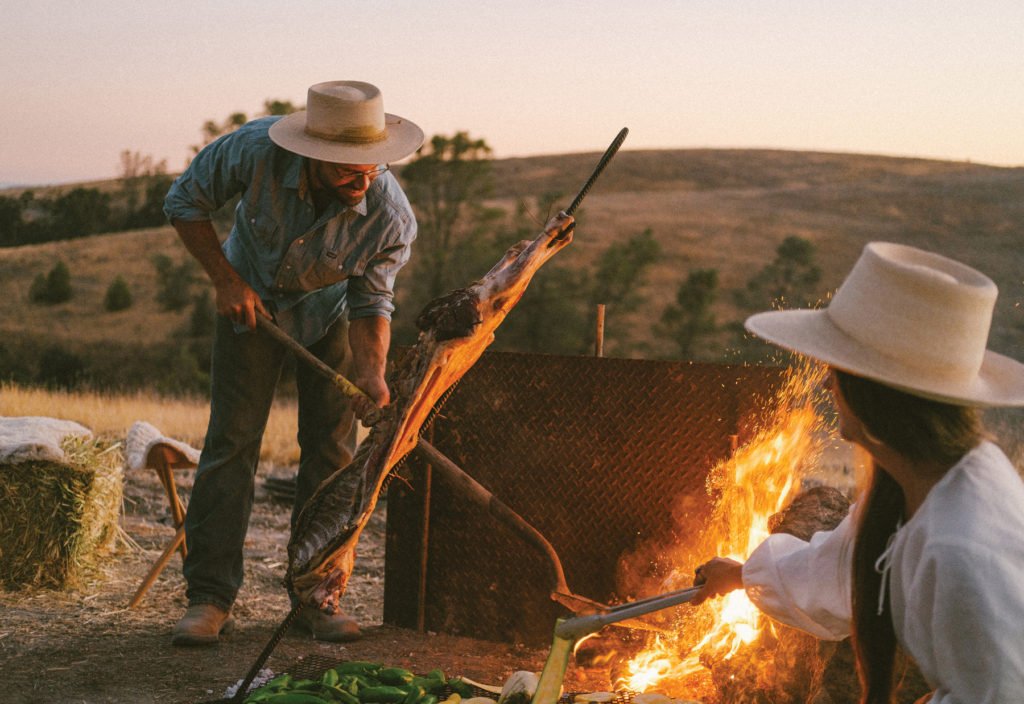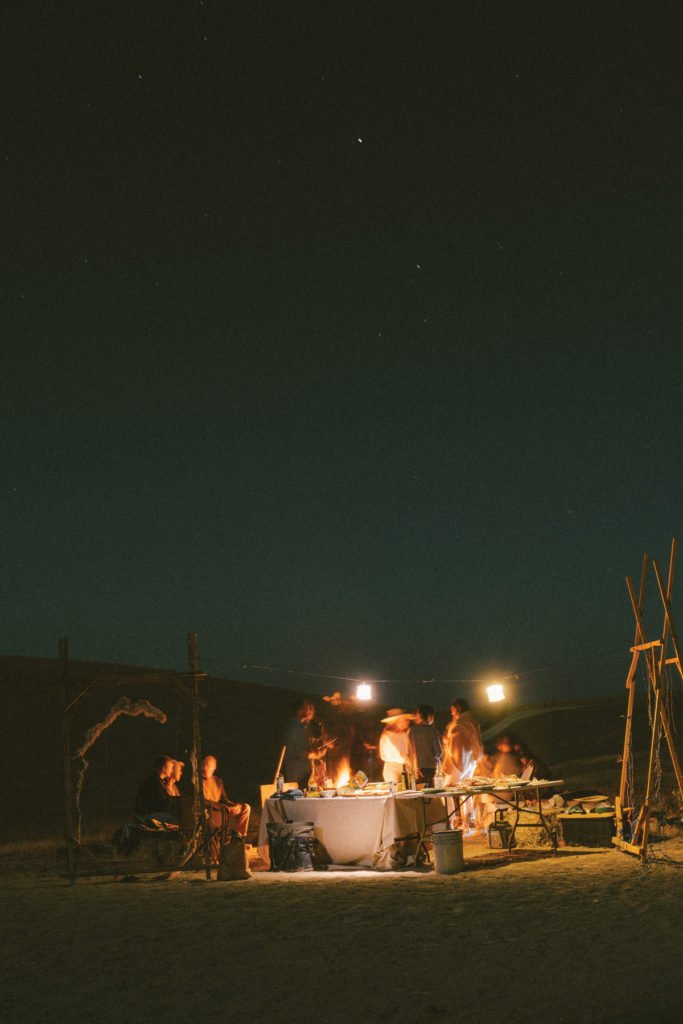
Waste Not, Want Not
Story by Brittany App
Photography by Richard Fusillo
Publisher’s Note: We here at Edible Magazine San Luis Obispo are honored to have this feature place in the 2022 Best of Edible Awards. From the best stories and recipes, to photography and illustration, each year the Edible Communities’ network of 80+ publications across the US and Canada submit their work, representing the best content that appeared in our magazines in 2021. And we are proud to say, we placed in the top three of not one, but two categories: Best Feature, and Best Profile Photography. To view all of the winning entries, visit here.
An amber sun rises over waves of rolling hills, tickling the leaves of live oaks that dot the landscape in this quiet corner of California. Long shadows on golden grasses splay in all directions. In these first cool hours of daylight, birds sing, bees buzz about and a small flock of sheep and goats happily graze the nearby hills with an important directive: sequester carbon.
Shele Jesse uses sheep in another way, too; she finishes and sells their hides through her label, Hollow Bone. Having grown up on 1,800 acres of wildlands in northern California’s Butte County, she remembers the wild spirit of the land there and feels it today as she tends her own property in San Miguel. This is where her mixed flock of Churro, Suffolk and Corriedale sheep, and Angora goats roam.
Like the animals, Shele starts the day with the sunrise and preps the fence to move her flock into fresh pasture, a task she does almost daily in her rotational grazing operation. Unlike open grazing with a permanent fence and free-ranging animals, rotational grazing takes daily attention, care and movement of the animals.

“The reason I have this flock of sheep is to work the land. Everything I do is for carbon,” explains Shele, whose background is in permaculture design, horse training, primitive skills and homesteading. “It’s important to me to devote my life to being outside and living in relationship with the outdoors and the landscape.”

Carbon farming is the practice of mimicking the behavior of ancient grazing herds with modern day livestock so as to stimulate the soil to promote growth of native grasses on the landscape. Compared to typical monoculture forage crops or invasive species, native perennial grasses will grow deeper roots, store more water in the soil and, importantly, pull more carbon out of the air and into the soil where it belongs; regenerative agriculture is another term for this same idea. Let the grazing animals do the work they were designed to do — eat, defecate, trample — without overgrazing and in the process, mitigate fire risk, restore rangelands and build soil. Holistic management of the flock is key to this effort.
Another result is delicious grass-fed meat. Shele’s favorite way to cook lamb after harvest?

“Slow, in a crock pot, or as a stew … all day, low simmer, until it’s soft and falling off the bone. Or all day long in front of a fire — the whole animal. We had the privilege of traveling to Argentina a couple of times, so it’s based on that style of cooking — asado. You split the animal open and cook for roughly three hours over an open fire. In Argentina, they love to put that on a big table. There are no plates, you just eat with your knife and share. That’s my absolute favorite way to eat.”
Nothing goes to waste. In addition to managing Grassland Grazing, her grazing and grass-fed lamb business, Shele is a renowned hide tanner. She practices Old World, traditional smoke-tanning techniques but employs artisanal methods, too. The hides of her own herd are tanned for personal use, but Shele also sells artfully tanned hides as blankets, vests and more under her Hollow Bone label. To reduce waste in the meat industry, Shele sources those hides from kill floors throughout California, hides that are otherwise destined for the landfill. With time, care, love and a heap of skill and elbow grease, she transforms these raw hides into beautiful, soft sheepskins that last a lifetime. She sells them, along with other handmade goods like camp chairs, pillows, vests and winter hats, through her successful hide-tanning business.

Why this intense focus on using the whole animal?
“Of course, we use the whole animal because it’s an opportunity,” she explains. “It’s healthy, it’s useful, it’s better than anything you can buy at the market, and it’s a waste not to. They’re a resource. I feel like when we say, ‘Use the whole animal,’ it’s a gimmick. Like we need to find somewhere for the bones to go. Okay we can make bone broth out of it. No, I need bone broth to survive, for self-care, for nourishing my body, and I’ve raised these sheep. So it’s a gift, it’s a reciprocal gift.”


